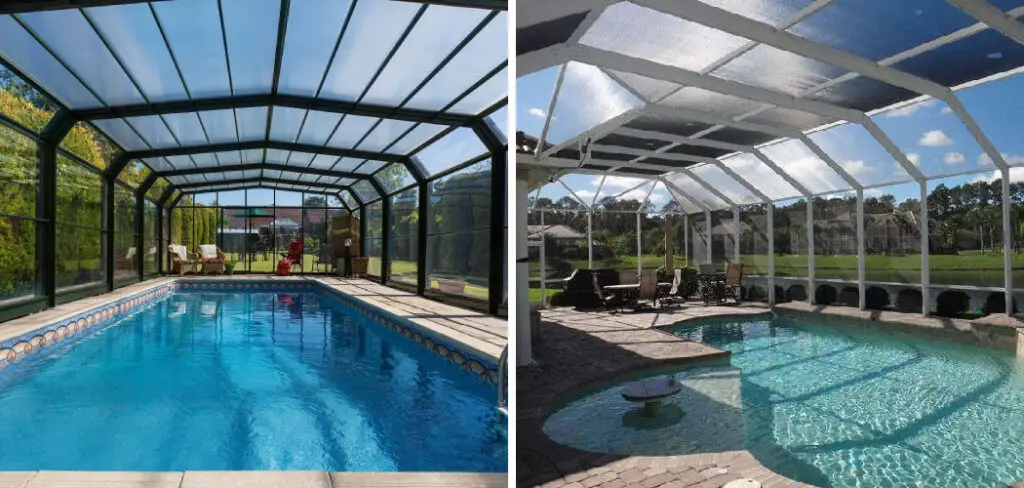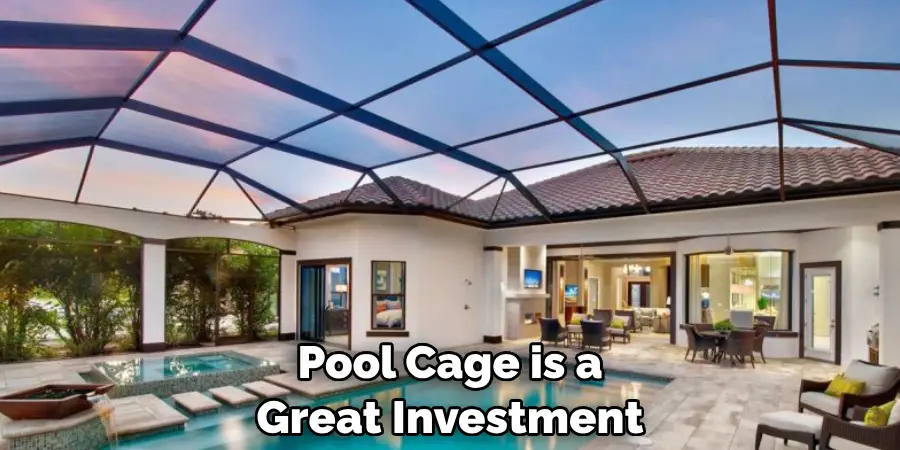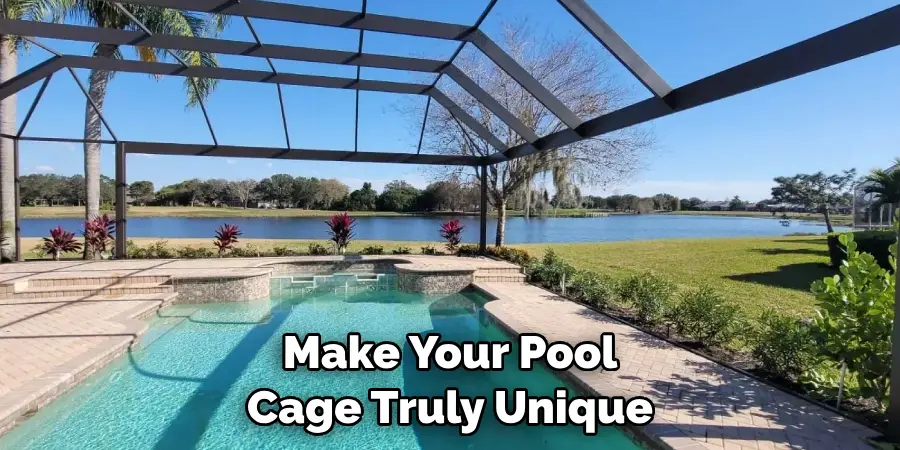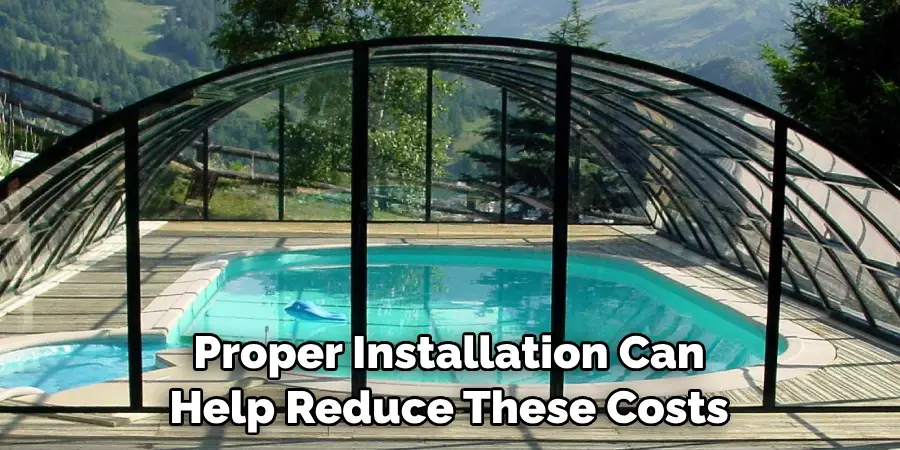Constructing a pool cage is a transformative endeavor that not only enhances the functionality of your pool area but also adds a layer of protection and comfort to your outdoor space. A pool cage, or enclosure, serves as a barrier against unwanted pests, debris, and harsh weather elements, allowing you to enjoy your pool year-round.

The process of building a pool cage involves meticulous planning, precise measurements, and a careful selection of materials to ensure both durability and aesthetic appeal.
From choosing the right frame material to installing the appropriate screening, every step contributes to creating a space that seamlessly integrates with your surroundings while providing a serene and protected environment. In this comprehensive guide, we will explore the essential steps and considerations on how to build a pool cage, empowering you to embark on this exciting project with confidence and success.
Importance of Pool Cages
Many homeowners have swimming pools in their backyards. While having a pool can be a great way to cool off during hot summer days, it also comes with its own set of challenges. One of the biggest concerns for pool owners is keeping the pool clean and free from debris. This is where pool cages come into play.
A pool cage is essentially a screened-in structure that surrounds a swimming pool. It is typically made of aluminum frames and mesh screens, providing an enclosed space for the pool without obstructing the view. Pool cages offer numerous benefits to homeowners, making them an essential addition to any backyard pool.
Benefits of Building a Pool Cage
A pool cage is a great investment that lets you enjoy your pool all year round. These structures are often built of aluminum frames and screens, providing a safe and comfortable environment for you to swim in without worrying about bugs, debris or harsh weather conditions. Not only do they prevent unwanted pests from entering the pool area, but they also protect your family and pets from potential accidents. In this section, we will discuss the benefits of building a pool cage.

Assessing Local Regulations and Permits
Before starting to build a pool cage, it is important to assess local regulations and obtain necessary permits. Building codes and regulations vary from region to region, so it is crucial to research and understand the requirements in your specific area.
The first step is to contact your local building department or zoning board. They will be able to provide you with information on any required permits or guidelines for constructing a pool cage. Some areas may require building permits, while others may only require certain inspections during the building process.
It is important to note that in some cases, your homeowner’s association (HOA) may also have specific guidelines and regulations for pool cages. Make sure to check with them as well before beginning any construction. Once you have gathered all of the necessary information and permits, it is time to start designing your pool cage.
10 Methods How to Build a Pool Cage
1. Determine the Design and Materials
The first step in building a pool cage is to determine the design and materials you will use. There are various options for the frame, such as aluminum or wood, and different types of screens, such as fiberglass or aluminum mesh. Consider your budget, climate, and personal preferences when choosing the design and materials.
2. Obtain Necessary Permits
Before beginning construction, it is important to obtain any necessary permits from your local building department. This may include a building permit and/or a zoning permit. Failure to obtain these permits could result in fines or having to tear down the structure. It’s better to be safe than sorry, so make sure to check with your local authorities before starting the building process.
3. Prepare the Site
Once you have your design and permits in hand, it’s time to prepare the site for construction. This may involve clearing any vegetation or debris from the area where the pool cage will be built. You can also use this time to prepare the ground, ensuring it is level and compacted for a strong foundation.

4. Lay Out the Foundation
Next, you will need to lay out the foundation for your pool cage. This typically involves digging holes for concrete footings at each corner of the structure and pouring concrete into them. The size and depth of the footings will depend on the specific requirements of your pool cage design, but they should be large enough to support the weight of the structure and any additional features you plan to include.
5. Install Frame
After the concrete has dried, you can begin installing the frame of your pool cage. If using aluminum framing, this may involve assembling pre-made sections and securing them with screws or bolts. If using wood framing, you will need to cut and shape the frame pieces according to your pool’s dimensions.
6. Attach Screens
Once the frame is in place, it’s time to attach screens to enclose your pool area. This may involve stretching screen material over frames and securing it with spline and a screen rolling tool. This is a precise process that may require some practice. If you have never done this before, it might be helpful to consult a professional for assistance.
7. Add Doors
Don’t forget to add doors for easy access in and out of your pool cage! These can be purchased pre-made or custom made to fit your specific design. Some popular materials for pool cage doors include aluminum, vinyl, and wood. Consider the climate in your area when choosing a material as it will affect the durability and maintenance of the door.
8. Install Roof Panels
If you want a roof on your pool cage for added protection from sun or rain, this is when you would install roof panels onto your frame structure. There are a few different types of roof panels to choose from depending on your budget and desired level of protection. However, before installing the roof panels, you must first ensure that the frame structure is strong enough to support them.
9. Add Finishing Touches
With all major components in place, it’s time to add any finishing touches such as trim or decorative elements to make your pool cage truly unique. You can choose from a wide variety of materials such as aluminum, wood, or PVC to create the perfect finishing touch. Though these elements may seem small, they can greatly enhance the overall aesthetic and functionality of your pool cage.

10. Regular Maintenance
To ensure your pool cage lasts for years to come, it’s important to perform regular maintenance such as cleaning the screens and checking for any damage or wear and tear. This will help keep your pool cage looking great and functioning properly.
Things to Consider When Building a Pool Cage
If you have a pool, building a pool cage can help to keep it clean and protect it from the elements. A pool cage is a structure that surrounds your pool, typically made of aluminum or another metal frame with screen mesh panels. It’s important to consider several factors when planning to build a pool cage, including local regulations, budget, and design options.
Local Regulations
Before starting any construction project, it’s essential to research and understand the local regulations in your area. Many municipalities have specific building codes for pool cages, which may include requirements for structural integrity, safety features, and height restrictions. These regulations are in place to ensure that your pool cage does not pose a danger to you or your neighbors.
You may also need to obtain permits from your local government before building a pool cage. These permits often involve submitting plans and having inspections during the construction process to ensure compliance with building codes.
Budget
Building a pool cage can be a significant investment, so it’s essential to establish a budget before starting the project. The cost of materials and labor can vary significantly depending on the size, design, and features of your pool cage. To get an accurate estimate, it’s best to consult with a contractor or builder who specializes in pool cages.
It’s also important to consider the long-term costs associated with owning a pool cage, such as maintenance and repairs. Choosing high-quality materials and proper installation can help reduce these costs over time.

Conclusion
In conclusion, building a pool cage is a worthwhile investment for any homeowner looking to enhance their outdoor living space. By following these steps and tips on how to build a pool cage, you can create a functional and aesthetically pleasing pool cage that will bring joy and relaxation to your family for years to come. Remember to carefully plan and budget for the project, choose high-quality materials, and seek professional assistance when needed.
Let your creativity shine through in the design process and don’t be afraid to add personal touches that reflect your unique style. With the right tools and techniques, you can successfully build a pool cage that not only increases the value of your property, but also provides a safe and enjoyable environment for you and your loved ones.

